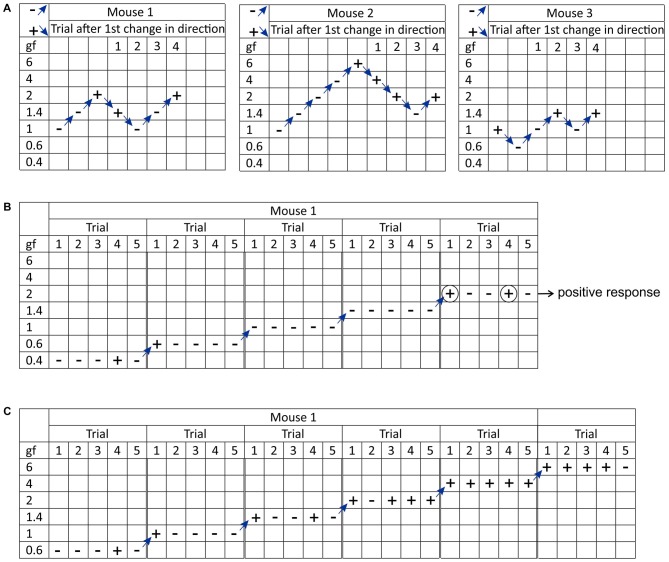Figure 2.
Visual representation of the different methodological approaches used to determine mechanical sensitivity using manual Von Frey. (A) The “up-down” method. The test begins by assessing the response to a filament estimated to be close to the 50% withdrawal threshold (in this case 1 grams-force). If there is no response, the next filament with a higher force is tested; if there is a response, the next lower force filament is tested. This continues until at least four readings are obtained after the first change of direction. The sequence of outcomes ( − for no response or + for response) is recorded and later used to calculate the 50% withdrawal threshold. (B) The “ascending stimulus” method. The test begins by assessing the response to a filament of the lowest force (in this case 0.4 grams-force) for a set number of applications (in this case five times). If the response rate is less than 40% (i.e., a withdrawal response is elicited in none or one out of five applications) the next filament is tested. If the response rate is 40% or more (i.e., withdrawal response is elicited in two or more out of five applications) testing stops and the force of the last von Frey filament is designated as the mechanical withdrawal threshold (in this case 2 grams-force). (C) The “percent response” method. In this test, monofilaments of varying forces (in this case 0.6, 1, 1.4, 2, 4 and 6 grams-force) are applied in ascending order an equal number of times (in this case five times) and the response to each trial is recorded.

